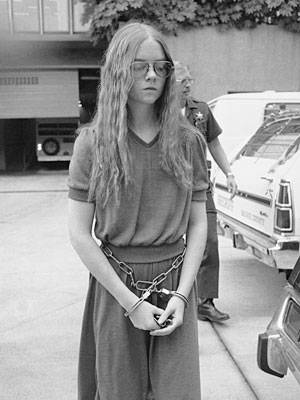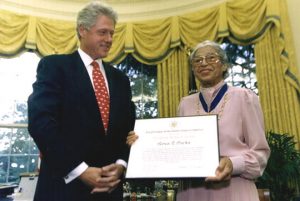“Ugh, it’s Monday” are the words that usually follow the arrival of the most dreaded day of the week. The sighs floating in the air are palpable and nothing seems possible. Mondays always carry with them a negative connotation and contain components such as depression, fatigue, and anguish. But to a San Diego elementary school, and to a troubled sixteen year old, Monday, January 29, 1979 held an even more distressing meaning.

Students at Grover Cleveland Elementary School, located in San Diego, California, began what they believed would be a normal Monday morning like any other, with bells ringing and students racing to their classes. Little did they know, however, that across the street, sixteen-year-old Brenda Ann Spencer was aiming her .22 caliber semiautomatic rifle right at society’s ultimate refuge, the elementary school, and its surroundings. After the first bell rang, Brenda broke the panels on the front door of her home, which was located right across the street from the elementary school. And she began to fire. The school’s principal, Burton Wragg, while rushing outside, was hit on the shoulder and chest with Spencer’s bullets and eventually died. Michael Suchar, the school’s custodian, ran outside with a blanket in order to cover Wragg and keep him from going into shock, but he quickly became the second victim of Spencer’s shooting and lost his life. In between all the chaos, 28 year old Robert Robb, a recent graduate of the police academy, while examining Wragg’s and Suchar’s bodies, was shot under his right shoulder blade.1 He would go on to survive though, along with the eight other children who were wounded in the incident. At least three of those children had abdominal wounds. A nine-year-old student, Cam Miller, was struck in the back with a bullet that exited through his chest without hitting any internal organs. Another, Christy Buell, was shot through her abdomen and in the buttocks, and had to undergo surgery in order to repair her intestine.2
When Gus Stevens, a reporter for the San Diego Evening Tribune, began calling around the area to gain more information about the shooting, he coincidentally placed a call to Spencer’s home where she gave him exactly what he wanted. She described the shooter, a sixteen year old, and the shooter’s address. When Stevens realized that she gave him her own address, he recognized what was going on and requested an interview while another staff member informed the police of the situation. The police, now aware of where the shots were coming from, were able evacuate the children and obstruct Spencer’s line of sight while trying to negotiate with her. After several hours, Brenda Spencer surrendered her weapon and several rounds of ammunition, and was subsequently arrested. While on the phone with Stevens, Spencer had stated that she was just shooting for the “fun of it.” She went on to say that she just didn’t like Mondays and did this “because it’s a way to cheer up the day.”3

Contrary to her initial claim, she later went on to state in her 2001 parole hearing that she had been “sexually abused by [her] father” and was “waiting for the cops to show up so they could shoot [her].”4 This new information has fueled many more theories today about Brenda Spencer’s true motives in committing such a crime. During her pretrial psychological testing, an injury to Spencer’s temporal lobe came to light. Spencer has also stated in a letter from prison that she experiences “grand mal seizures” that she has to counteract with medications.5 Such a brain injury would definitely be a precursor to epilepsy, which is two to four times more common among violent offenders than the public.6 The lack of treatment she received for this disease, to some, proves the neglect that she experienced from her family and in her childhood. Psychologist Jonathan Fast introduces the idea that her brain injury, abuse, and the effects of it pushed her to her final actions. He believes that the shame, ridicule, inferiority, and powerlessness that she felt encouraged her to go as far as she did. In another letter she wrote in prison, she stated that her “father had done everything a person could do to another person. The beatings, the touching, the emotional abuse.” She went on to state that no one, not teachers or counselors, gave her assistance through this, so she simply thought that this was how the world and how life worked. When her father gifted her the .22 caliber rifle, she thought that he was finally telling her to do it: to take her life successfully, unlike her past suicide attempts, and leave the world forever.7
Whether these theories are true or not, Brenda Spencer was tried as an adult and pleaded guilty to two counts of murder and nine counts of assault. She was sentenced to twenty-five years to life in prison, and is still serving her sentence at the California Institute for Women. The shooting has inspired a song by the Boomtown Rats called “I Don’t Like Mondays,” and has also gained other media coverage through a documentary.8 Her action went down in history as the first high profile school shooting and has become a vanguard to many future, unimaginable school situations and violent outbreaks. Whether Spencer was a cold-hearted killer or a truly lost and confused soul that simply wanted an escape, it is undeniable that her horrible actions have had some frightening consequences in our modern world.
- Jonathan Fast, Ceremonial Violence (New York: The Overlook Press, 2008), 25, 70-71. ↵
- Tamara Jones, “Look Back in Sorrow,” Good Housekeeping 227, no.5 (November 1998): 118. ↵
- Jonathan Fast, “Unforgiven and Alone: Brenda Spencer and Secret Shame,” in School Shootings: International Research, Case Studies, And Concepts For Prevention, ed. Nils Böckler (New York: Springer, 2013), 253-255. ↵
- Debra Sevey, “Subsequent Parole Consideration Hearing of Brenda Spencer,” (Capitol Electronic Reporting, 2001), 15-16. ↵
- Jennifer Furio, Letters From Prison: Voices Of Women Murderers (New York: Algora Pub., 2001), 134. ↵
- Jonathan Fast, ” Unforgiven and Alone: Brenda Spencer and Secret Shame,” in School Shootings: International Research, Case Studies, And Concepts For Prevention, ed. Nils Böckler (New York: Springer, 2013), 251. ↵
- Jennifer Furio, Letters From Prison: Voices Of Women Murderers (New York: Algora Pub., 2001), 134-135. ↵
- Encyclopedia of School Crime and Violence, September 2011, s.v. “Brenda Spencer,” by Laura L. Finley. ↵



243 comments
Destiny Flores
This story is incredibly captivating. At the time, it gained so much attention nationwide due to the fact that school shootings weren’t as prominent as they are now. Now, shootings are so abundant. It’s a shame that since then, so many shootings at schools, and even churches, have occured and people still haven’t done anything about any sort of gun control.
Brandon Martinez
It is sad that with all the red places and signs given off by her, that nobody bothered to realize them. I was surprised to learn that the shooter was a female as that’s not very common. Any shooting is sad to read about, but I’ve never learned or knew about this one prior to reading the article. It is well written and decribes the horror that happened at this event. I enjoyed this article very much and learned a lot from it. Thank you.
Austin Pena
Learning of this shooting is interesting because i always though the first school shooting was Columbine but to see that this one happened almost 20 years prior is shocking. To read that she did all of this because of a day of the week is disturbing and makes me think if other school shooters thought along the same line and acted due to something as ridiculous as that.
Destiny Leonard
Prior to reading this article I had never realized that the first school shooting took place years before the columbine shooting. It is astounding to me that before the columbine shooting , school shootings were so rare yet today we are so used to hearing about shootings within schools that we are often somewhat un-phased about the whole occurrences. This was a great article it truly gave me some insight into the history of school shootings.
Jasmine Jaramillo
This story shows how once again great tragedy stems from mental health problems. The article is sad from all points of view. It’s sad and disappointing that no one could help Brenda Spencer in her youth and give her the help that she needed to cope with what she might have gone through. It’s also sad that she had to take other people’s lives to feel something. This article did a great job of telling the story of the Clevland Elementary Shooting.
It started in the 60s & 70s
Her father went on to marry her cell mate from Juvie Hall. Awful.
Didier Cadena
It was really interesting to read about one of the first major school shootings to affect the mainstream American mainstream media. I was aware of this story because of the Monday phrase, so it was good to see a well-formed article on this subject. The article does a great job of giving the details of the shooting and the aftermath of the event on Brenda’s life.
Seth Castillo
I can’t imagine the thought prosses of someone who thinks that shooting people is something to do for fun. It’s hard to imagine what could possibly be going through her head that would have led her to believe that shooting up a school would be a good idea. There are so many questions about what could have lead to her deciding to shoot an elementary school.
Isaac Rodriguez
Learning that the Grover Cleveland Elementary school pre-dates the Columbine High School massacre by twenty years, is somewhat eye-opening. I had always believed the Columbine massacre was the first school shooting in the nation. I hope Brenda Ann Spencer is never released from custody. With the availability of high-powered weapons, who knows how many lives she would take given the opportunity or if she experienced another boring Monday.
Derek Esquivel
I have never heard of this shooting but I have heard the quote where she says that she says she does not like Mondays I just never knew where it had come from. It is extremely sad that a girl at this age would do such a thing to innocent little kids that had no take on her abusive relationship with her father. She had no right to shoot to begin with and should have gone to the police about the situation. But, overall the article was very good and I learned something very interesting and sad at the same time.